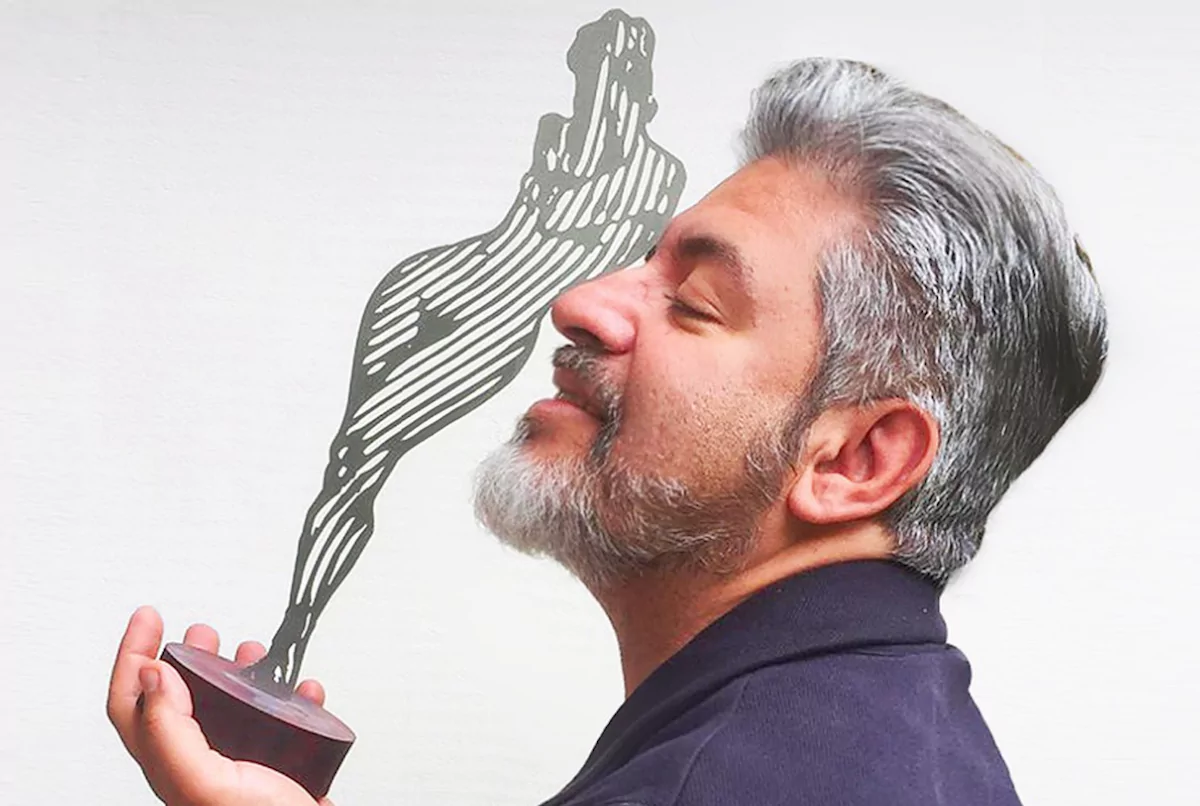Artist Marcos Marin’s journey is a testament to his versatility and dedication. Starting as a virtuoso pianist in his native Brazil, he later transitioned into a professional painter and sculptor in Monaco and Italy.
His early exposure to art, with a drawing studio at home and a father who loved to paint, sparked his interest in painting at a young age. Despite his success in music, graduating in classical piano at 14 and becoming a professional pianist, he never abandoned his passion for painting. At the age of 15, he held his first solo painting exhibition, marking the beginning of his artistic evolution.
During the ’90s in Paris, Marcos Marin’s artistic trajectory took a significant turn. He transitioned from a successful career as a pianist to a burgeoning painter. This shift was not a complete departure, as his musical and visual arts always intertwined. His works began to sell well, and he found himself drawn more to the world of painting.
It was in Miami that Marcos Marin’s artistic journey took an unexpected turn. Faced with a lack of mural space for his participation in the ‘Arte Americas’ fair, he was forced to create a standalone art piece. This necessity led to the birth of ‘Monalisa’, his first monumental sculpture, which measured a staggering four metres in height. The organisers were so impressed that they installed it at the entrance of the Art Fair.
Honouring Ayrton Senna
Most recently, Marcos Marin was deeply involved in honouring the memory of the late Brazilian F1 race car driver, Ayrton Senna. On the 30th anniversary of Senna’s passing, he participated in three different ceremonies in Monaco. His colossal sculpture of Senna returned to the gardens of the Meridien Beach Plaza, and the Senna family received a special edition of silkscreens signed by him. He also unveiled an edition of eight sculptures of the most famous Ferrari drivers, including two of Ayrton Senna. Four other monumental works were on display in the terraces of the Princess Grace Academy throughout grand prix weekend.
Monaco Life’s Celina Lafuente de Lavotha met Marcos to tell us more about how his artistic career evolved into creating monumental sculptures owned by many collectors and exhibited worldwide.
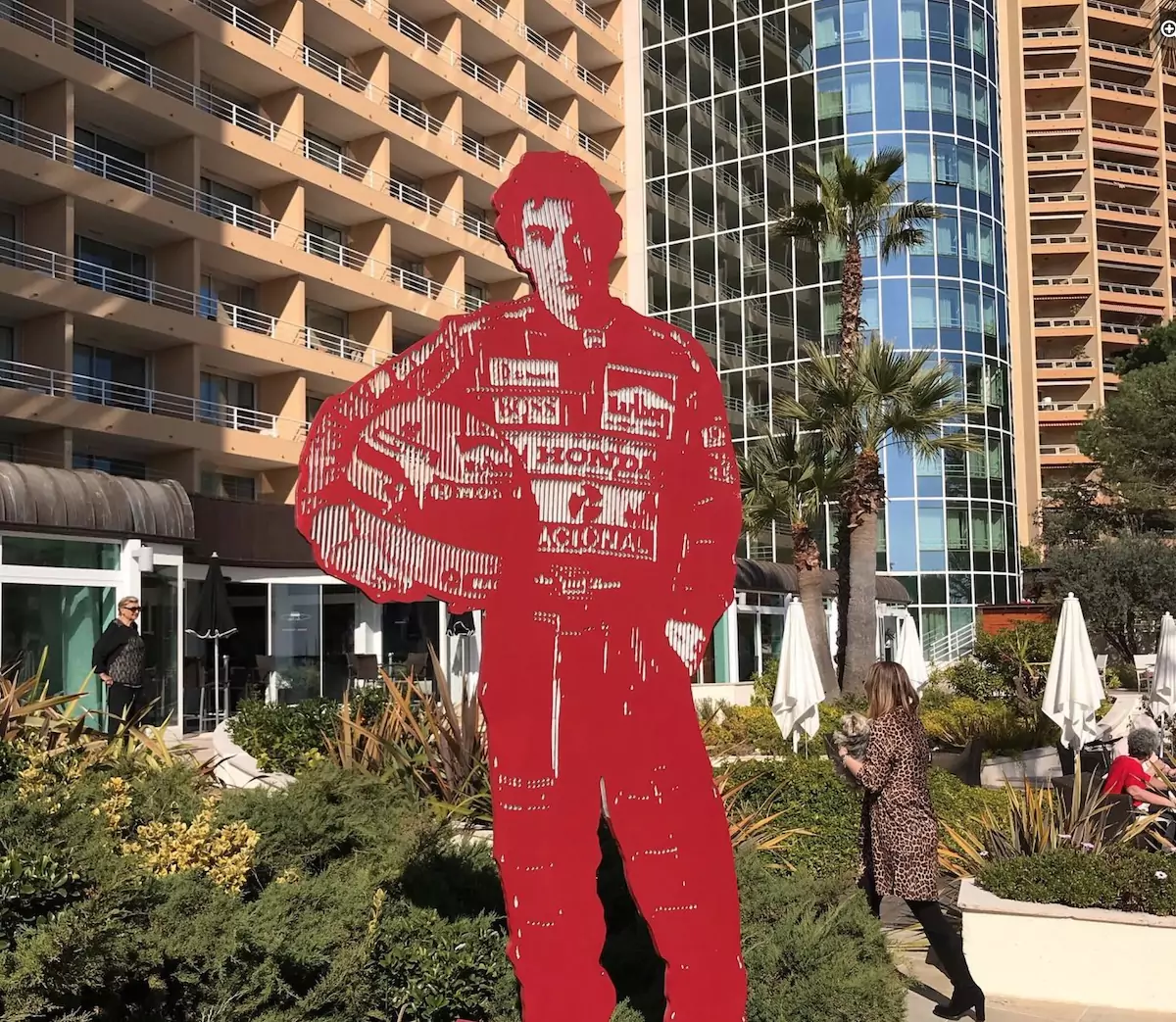
Did you formally train as an artist?
I studied music and piano at the conservatory but have yet to take a fine arts course. I had the privilege of spending time with renowned artists, and I visited many museums and galleries with my father. I learned how to mix oil paints in our home studio freely and experimentally. I have always been inquisitive and asked many questions, plus my manual skills were already well exercised as a virtuoso pianist. I am ambidextrous, as I can write with both hands and often use both hands simultaneously when painting. I like to work quickly and finish a canvas immediately, and I am eager to move on to the next idea.
I worked in an artistic screen printing studio, where I learned this surprising technique. Being a self-taught artist allowed me to explore possibilities and curiosities more unrestrained, unguided, and without formal expectations. Over the years, I have attended and visited ateliers worldwide and seen techniques and ways of creating and treating very different materials. The idea, concept, composition, chromatic, and tonal study are fundamental, sometimes corresponding to predictable techniques’ coldness. You learn through observation and active experimentation.
Who were the artists who inspired you? Who were your mentors throughout your career?
I’ve always been passionate about Art Deco and Art Nouveau elements, which were very present in the various houses and apartments where I lived as a child and were the source of my inspiration.
When I was very young, I remember magazines and newspaper articles about Salvador Dali, and I was very impressed by Surrealism. Roger Dean, the illustrator of the album covers of the group ASIA, who was also a surrealist, inspired me with his fascinating and dreamlike floating islands. I painted with hyperrealist techniques. I have always liked portraits, but Surrealism has conditioned me to a parallel universe.
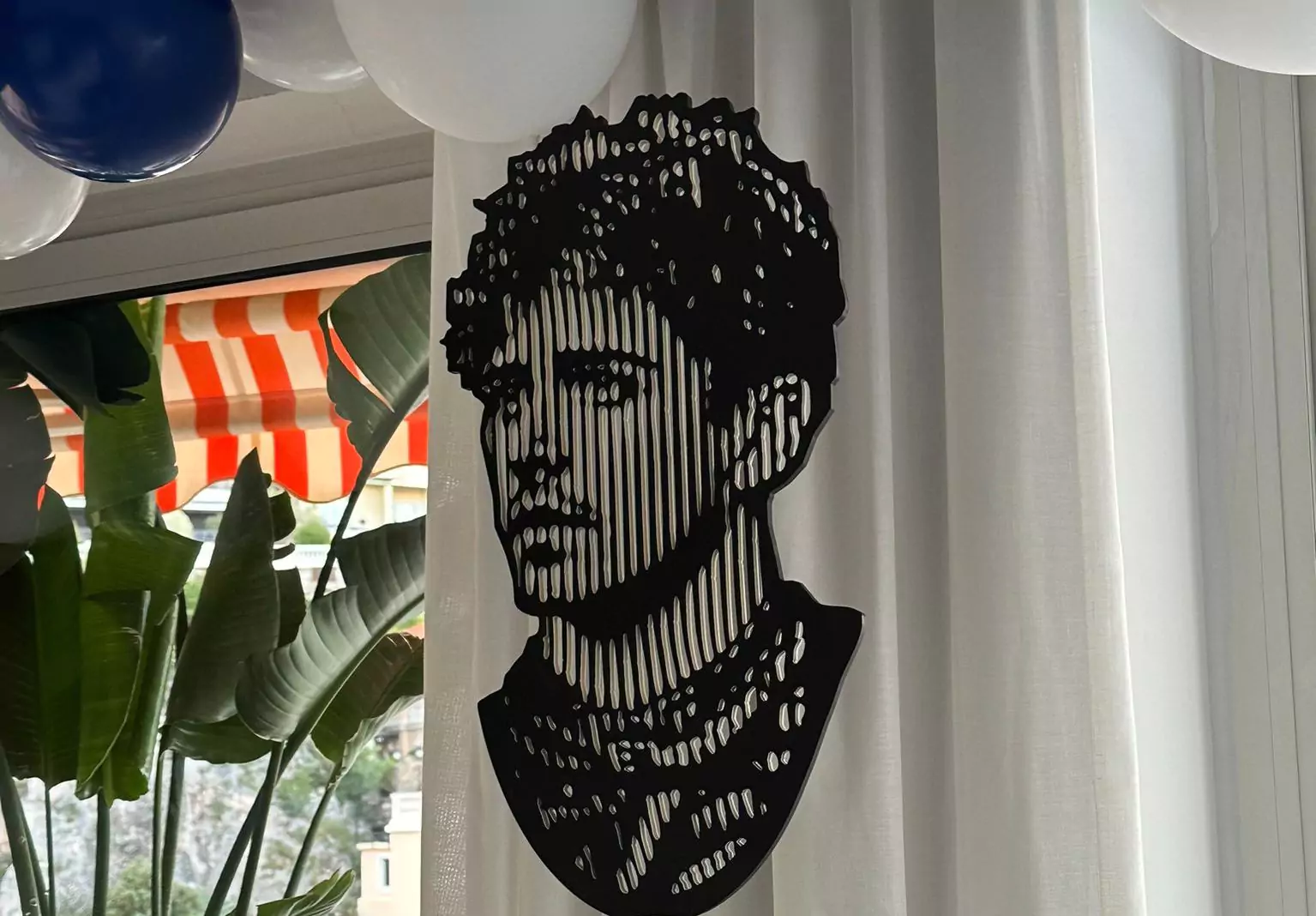
When I arrived in Paris in 1990, I met the great master Vasarely and got familiar with his artworks and other artists from the part movement at Denise René’s Gallery. Op’Art kind of startled me, entered my mind, and I fully integrated the idea of optical. Then, I started trying to incorporate optical techniques and suggestions into portraits. Then, I started winning many awards and joined the Figuration critique group in Paris. People liked and wanted to own my portraits, and I moved to Miami in 2000, where I was already intensely reliant on optical portraits. Then, meeting the great masters Cruz Diez, Jesus Soto, and others from this movement profoundly influenced my formation as the artist I am today.
Finally, I want to mention Pierre Cardin, who became my patron and mentor. From Cardin, I learned to appreciate the balance and aesthetic sense of fashion, the evaluations, and great discussions about “Beautiful” over “Myth,” concepts that would come to temper my works with elegance and balance, minimalism and strength.
Could you list some well-known personalities and movie celebrities you have immortalised in your sculptures?
I had the privilege of meeting and creating portraits of many icons of cinema, music, royal houses, presidents, and high-profile personalities. I can mention some exceptional ones, such as Michael Douglas, Princess Stephanie, George Michael, Pope Francis, Phil Collins, John Travolta, Prince Albert and Princess Charlene of Monaco, Roger Moore, and Alain Delon. I didn’t know others like Grace Kelly, Gregory Peck, Sophia Loren, Frank Sinatra, Madonna, Elthon Jhon, and Charles Aznavour. I could list more than 100 names; I just did an exhibition of 28 monumental sculptures entitled “State of Grace,” celebrating great icons of the golden age of cinema and close friends of Grace.
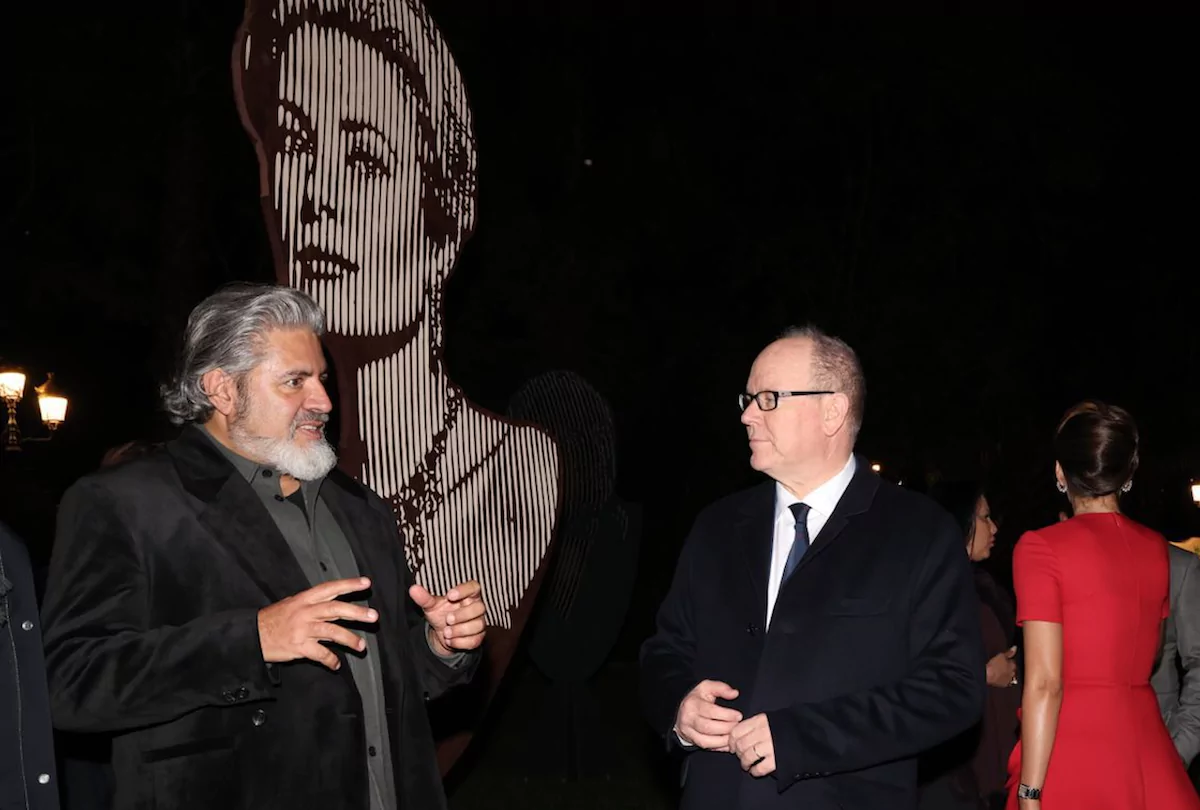
How did your sculpture ‘Shy’ become the Monte-Carlo Fashion Week (MCFW) Award?
I like this question! I have a passion for fashion, so I met Federica Nardoni Spinetta, founder and president of MCFW, who proposed that I design a statuette for this glamorous competition. I remembered studies I had made of this naked woman based on photos I had taken of Adriane Reis, a wonderful Brazilian friend. The sculpture is shy and does not show its face, but it is impossible to hide its sensuality with openness and lightness. I presented the drawing to Federica and the MCFW committee, and the trophy was born. A woman was waiting to be dressed by fashion creators! SHY has become a much-appreciated icon and brilliantly represents the concept of the MCFW Awards Ceremony.
Please tell us about your collaboration with Diana Mars, in which she created a collection utilising your art.
Dianna Mara, or Didimara, was introduced to me in an art and fashion space in Lisbon, and a great synergy friendship emerged, as I love Dianna’s design and creations. We instantly conceived our collaboration, and I enjoyed creating optical movements in the fabrics. Finally, the first collection graced the catwalk at MCFW 2015 with great success! I was always shocked by the aesthetic results, the fluidity of Dianna’s design, and the understanding of the optical composition that ultimately enhanced the garments. We started to create other collections and were able to present ourselves worldwide. We are at a crucial point of launching a significant production and distribution.
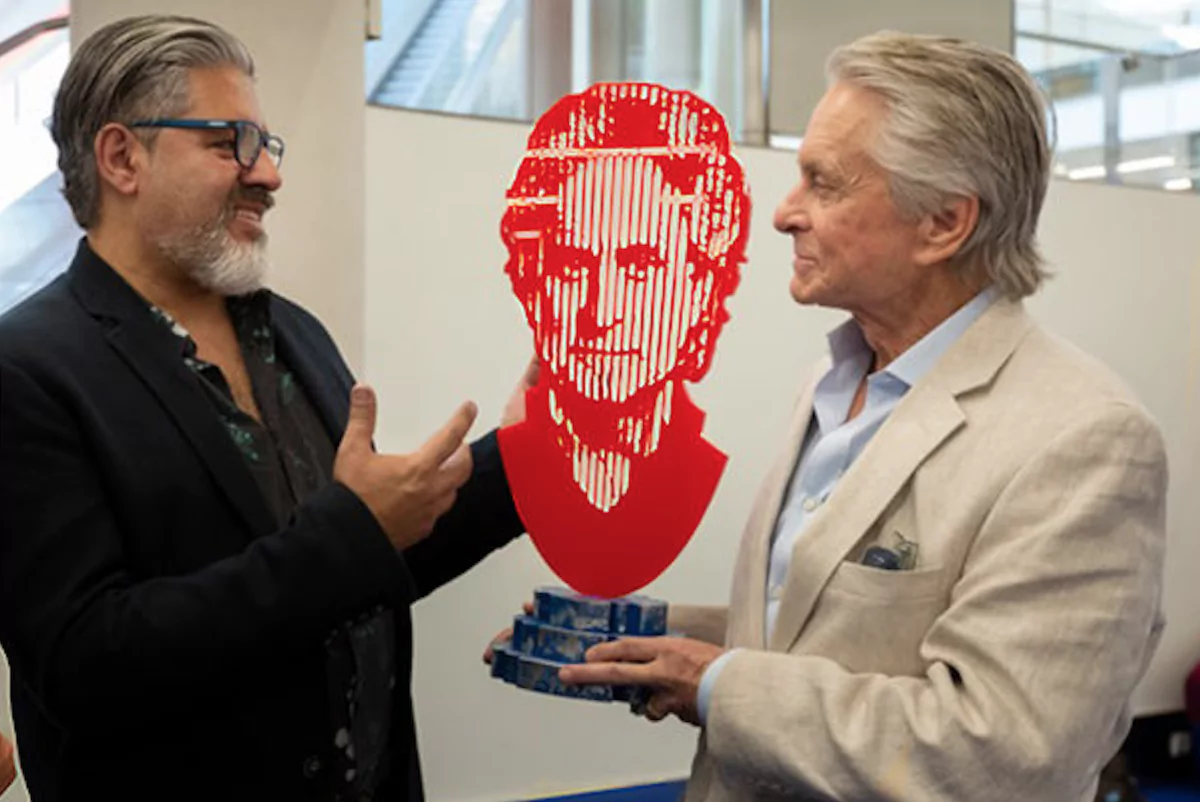
Where is your Atelier and showroom?
Today, my studio is in my house in Ventimiglia. I also keep a studio in Portugal, where I produce monumental works, and another in Milano, also for large sculptures. I lived and worked in the Principality for 12 years, and while I no longer reside there, I maintain my professional status as an artist in Monaco.
My artworks are present in various locations and points of sale, such as Mark Hachem Art Gallery in Paris, Beyruth, New York, Chateau de Cremat in Nice, Saatchi Gallery in London, and Ninoska Huerta Gallery in Coral Gables in the Miami region. I also hold many exhibitions in Museums and cultural centers and at international fairs worldwide.
How do you promote your work?
I use social media networks to promote my art. I maintain a great relationship with the international press, and every year, journalists feature me and my art in exciting articles and essential editorials. As an artist, I participate in large art fairs, auctions, and social events, which are excellent ways to publicise my work. Art should speak for itself, too, and large monumental exhibitions in public spaces are a direct and interactive way of communicating with the public.
Do you keep in touch with your art collectors around the world?
Yes, this is essential, and in my case, very natural, as collectors and art enthusiasts become friends. Many collectors are geographically distant, and some are very discreet; however, I closely follow the evolution and path of my works. I make portraits of people entering an emotional, affective, and personal field in their life stories.
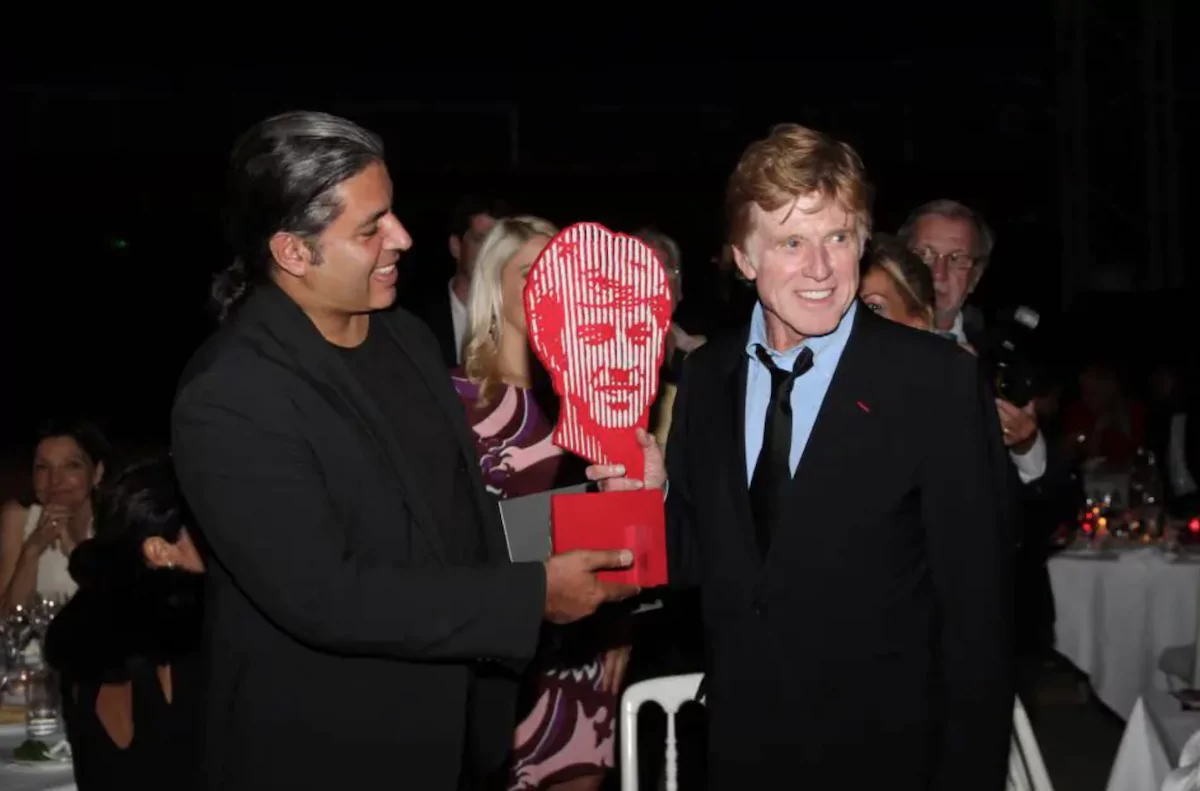
Do you envision creating a Marcos Marin Art Foundation?
I want to create a Foundation in Italy to promote artist residency programs, something Pierre Cardin encouraged me to do, to pay off for the opportunities I had in the many art residencies I participated in throughout my professional career. A foundation can help respect and perpetuate my art and history, keeping it alive, organised, and active in the local and international artistic scene, respecting my humanist and philanthropic intentions. It’s a long process, but after celebrating my 40-year career, I am ready to consider doing just that.
Do you have a message for young artists who want to pursue a professional career?
I want to quote a phrase by Pierre Cardin: “The most difficult thing in an artist’s career is his first sixty years!”
You cannot build a career quickly, nor is it a quick recognition of followers on social media, nor is it the commercial result of an aggressive sales strategy that makes the artist “Good.” An artwork must have its exclusive identity, a brand, and a recognizable and indisputable signature. You need to leave a path; the force of art must speak loudly! An artist does not retire; his art is an exercise in life. Look for your own identity, and pay attention to excellence in creation! Travel a lot, test yourself and work hard, produce endlessly, try all the possibilities, or just a simple idea!
Join the Monaco Life community – sign up for the Monaco Life newsletter, follow our Podcasts on Spotify, and check us out on Threads, Facebook, Instagram, LinkedIn and Tik Tok.
All photos courtesy Marcos Marin
